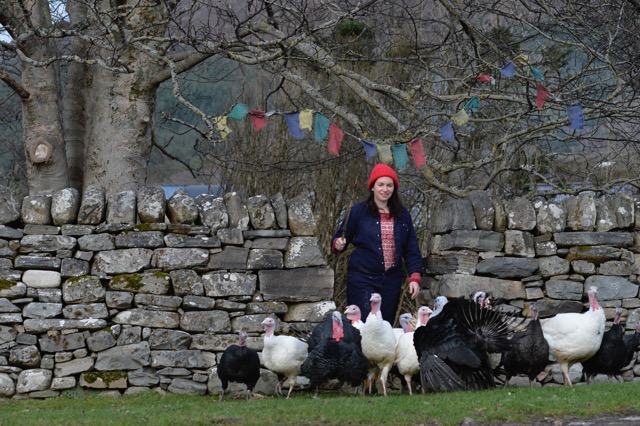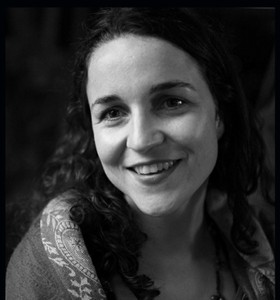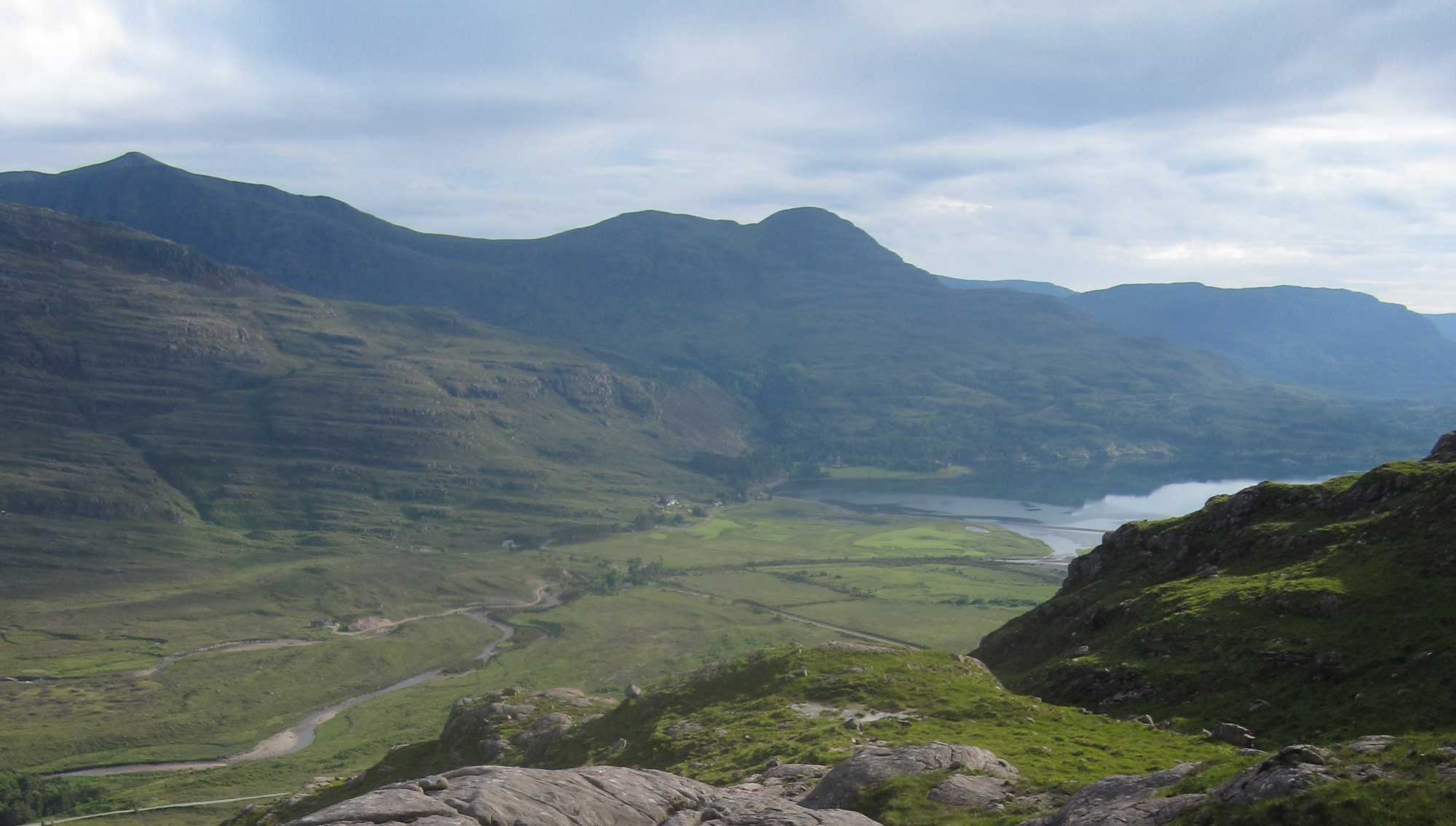
Free-range turkeys raised with care by farmer Lucy Beattie
Writing The Ethical Carnivore taught me how to shoot, fish and butcher animals. Most importantly, it taught me to be grateful for the meat we eat.
Thanksgiving is traditionally the time to show gratitude for the food we eat. In recent years in the US more emphasis has been given to the centrepiece of the meal, the meat. Many Americans are now choosing a vegetarian or even vegan diet in order to avoid the environmental impact of raising livestock and factory farmed animals. Others are choosing to take more care over where the meat has come from and give appropriate thanks for the life, and death, of the animal.
This was the starting point of my first book, The Ethical Carnivore. Frankly, I was fed up of sitting at the dinner table and listening to my hipster friends go on about where their meat came from. Sure, they knew the animal was ‘free range’ or ‘organic’. Possibly they even knew the farmer if they had bought the meat that morning at their local farmers’ market. But did they really understand how the animal had lived and died?
I felt the most honest way to find out was to only eat animals I killed myself. As soon as I said the words out loud, I knew I was onto a subject that would surely be discussed around the office water cooler the next day. My metropolitan male friends seemed particularly fascinated. How would I do it? What would it feel like to kill? How do you skin and butcher an animal? It was also raising huge philosophical questions. What right did I have to kill an animal?
Appropriately enough for a journey that would end with giving thanks, I started off with turkeys. I volunteered to help a farmer friend process that year’s flock for the festive season. I did not kill the turkeys myself, as it was done with an electric stunner that requires special training. But I did watch the whole process being carried out. I was taken aback by how upsetting I found the moment of death, but also by the care and gentleness of the farmer Lucy Beattie. She clearly cared deeply about these animals. She had raised them from fluffy chicks and even rescued them from a flood. When the time came and the blood tinkled into a bucket, she was as quick and gentle as she could be.
As I embarked on my own experience of sourcing meat, I had the echo of Lucy’s words in my head. ‘I am the softest person I know…’ The first animal I shot was a rabbit with a beautiful white blaze. I cried, the gamekeeper I was with cried. I wondered if I was too soft to carry on, but when I looked around me at the country men and women hunting meat for themselves, I saw good people connected to nature. I wanted to learn the skills that have sustained mankind for centuries. It was never easy, but I did become much better at shooting and fishing and even butchery. I went on to eat more rabbit, squirrel, plenty of fish and deer. I learned never to waste a scrap of meat and to appreciate every mouthful. Most importantly, I learned to be grateful for the animal and the environment that allowed me these meals.
Of course, most of us cannot afford to eat only wild meat, so I also researched how domestic meat such as cattle, sheep, pigs, chickens and yes, turkeys are produced on our behalf. Again it was upsetting. Much of the cheap meat we eat is raised in cramped conditions and processed on a large scale. Turkeys are the worst. Most are kept indoors and bred to grow such huge breasts, so fast, they simply topple over. I looked back at Lucy’s Beattie flock of turkeys scratching around for six moths in the Highlands of Scotland and felt grateful for hard-working farmers who give us the option of good meat.
During the year I learned a lot about the environmental impact of meat. I learned that greenhouse gas emissions from livestock are more than all the world’s planes, trains and automobiles put together. But I also met farmers maintaining the landscape and rural economies by producing nutritious food. My conclusion was that we should eat less meat to protect the world’s environment. Where we do choose to eat animals, we should be grateful for the resources spared and the farmer’s dedication and hard work.
It is possible to be an ethical carnivore. You don’t have to kill animals yourself. But you do have to understand fully where they have come from. That means not only looking at labels and attending farmers’ markets, but taking on the difficult fact an animal has died and we owe a little gratitude. I find that naturally means people eat less meat, which is not only far better for the planet and our pockets, but our health.
The book finishes with The Selkirk Grace, attributed to Scots poet Robert Burns. It is a poem about gratitude that would grace any Thanksgiving table:
Some hae meat and canna eat,
And some wad eat that want it,
But we hae meat and we can eat,
Sae let the Lord be thankit.



Hi Louise,
both my husband and I have read your book and we thought it was great. You articulated what we have long thought – that it’s okay to eat meat as long as we care about how the animals are reared, how they die and once they are a carcass we don’t waste any of it. So thanks very much indeed.
Hi Louise, you have written really interesting blogs. Thank you. An ethical carnivore though? It’s an oxymoron to me. I can’t see how taking a life can be considered ethical. And with so many alternatives to meat around, and, knowing the harm rearing meat causes the environment, why continue to eat it. In your reply to Ros, you state that there are people who care about animals, but who eat them. That is impossible. If you valued an animal, you would not eat it. Do they eat dogs and cats too? If not, why not?
Nice post. I will definitely be buying the book. Enjoyed the Burns poem – we have just ‘done’ Burns Night, of course, in which we enjoy our own haggis. We may not have killed the haggis – have yet to learn that running the wrong way round the hillside thing! 🙂 and we do not kill our own lambs. They go to local small-business butcher in nearby town, 15 minutes trailer-haul away. We know the man and we know he does a good, clean, respectful, stress-free job. We also value that he is there to meet the needs of all the many small holders. As I understand it in the UK, most of these small guys have gone to the wall and pigs and sheep now need hauling an hour and half to some big-town factory or meat plant.